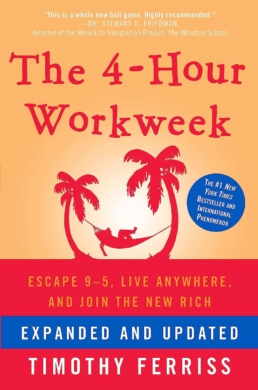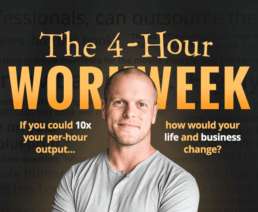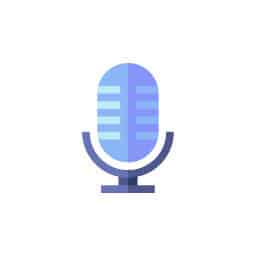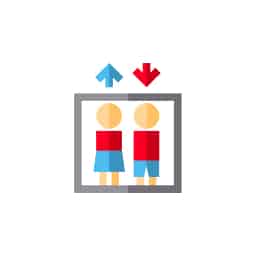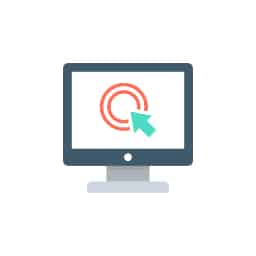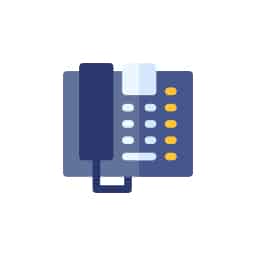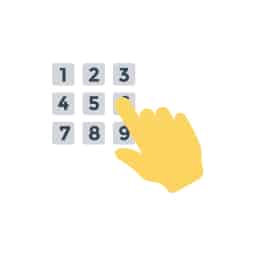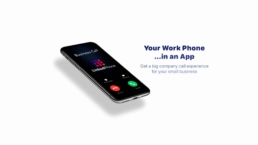The 4-Hour Workweek by Tim Ferriss [Book Outline & Summary]
Why should you read The Four-Hour Workweek by Tim Ferriss?
Tim Ferriss’ book The Four-Hour Workweek is chock full of practical tips for breaking free from the 9-5 grind, living anywhere, and joining the “New Rich”. According to Ferriss, we shouldn’t be deferring enjoyment until retirement, accumulating wealth through the grind of our younger years for a potentially less active future self. This book offers a wealth of wisdom for anyone seeking to minimize work, optimize productivity, and tap into more meaningful work and lifestyle options.
“What cheesecake are you eating?” is just one of the many thought-provoking questions posed in The 4-Hour Workweek that get the reader thinking about their work-life balance and “Lifestyle Design” – or how they can redefine their lifestyle on their own terms. Of course, author Tim Ferriss doesn’t wish to know the particular flavor of your dessert – rather, the cheesecake is a metaphor for “what people do on a larger scale with jobs all the time: self-imposed suffering that can be avoided.” Ferriss wonders if life really has to be so hard!
Breaking free from the 9-5 grind, living anywhere, and joining the “New Rich” are central themes of the book. It walks the reader through a step-by-step process to reinvent themselves, providing practical tips for everything from quitting your job to traveling abroad and finding cheap flights. This book offers a wealth of wisdom for anyone seeking to minimize work, optimize productivity, and tap into more meaningful work and lifestyle options.
LinkedPhone serves the small business community with local & toll-free business numbers that work with your cell phone, desk phone, & laptop. Add a 2nd phone number to your cell phone with our mobile app. Talk & text with clients on the go. Add team members too. Finally break free from the desk phone. At LinkedPhone, freedom rings! 🔔📱💻☎️
The 4-Hour Workweek as a Manual for Lifestyle Design
At its core, The 4-Hour Workweek challenges the traditional norms of a work-life setup. It posits that we shouldn’t be deferring enjoyment until retirement, accumulating wealth through the grind of our younger years for a potentially less active future self. Instead, Ferriss advocates maximizing personal freedom and redefining success based on individual terms, introducing the concept of the “New Rich.” These are individuals who reject the conventional “deferred-life plan” and enjoy luxurious lifestyles today, leveraging time and mobility – the currency of the New Rich – irregardless of their bank account balances.
Who Can Benefit from the lessons in The 4-Hour Workweek?
The 4-Hour Workweek is primarily geared toward individuals feeling trapped in their careers and wanting to break free from the traditional 40-hour workweek model. With tips and tricks for maximizing productivity and eliminating waste, it resonates particularly well with new and aspiring entrepreneurs, small business owners and freelancers looking to design their ideal lifestyle in balance with work.
The principles in this book can be applied broadly, making this a great read for anyone interested in rethinking the concepts of work, life, and success. At the very least, Ferriss promises one might learn a few “Jedi mind tricks” to disappear from the office undetected, or clever hacks like how to double your typical vacation time.
The Mind Behind The 4-Hour Workweek
Tim Ferriss is a renowned American author, podcaster, investor, entrepreneur, and lifestyle guru. With an impressive resume that includes authoring multiple #1 New York Times and Wall Street Journal bestsellers, hosting TV shows in China and Thailand, and advising startups such as Uber, Facebook, Shopify and Duolingo, Ferriss has established himself as a thought leader in productivity and lifestyle design. He has been listed as one of Fast Company’s “Most Innovative Business People” and one of Fortune’s “40 under 40.” His podcast, The Tim Ferriss Show, has earned him the nickname “the Oprah of audio” due to its massive reach and influence.
Ferriss’ enigmatic and tenacious personality can be summed up with this quote: “I return to the United States defeated and decided to learn kickboxing, winning the national championship four weeks later with the ugliest and most unorthodox style ever witnessed.” Ferriss’ relentless personality and passion are practically contagious throughout the pages of this book, pushing readers to challenge their own status quo.
The Core Ideas of The 4-Hour Workweek
Ferriss disrupts the traditional concept of work-life balance by introducing what he calls the DEAL system: Definition, Elimination, Automation, and Liberation. This method offers a roadmap to redefine success, cut out non-essential tasks, automate and outsource operations, and liberate ourselves from geographic restrictions.
Step I: D is for Definition
Step one, Definition, involves redefining your goals along with your ideas of work and success. Ferriss prompts readers to break free from societal norms and instead tailor their definitions of success to their own personal terms. One of the exercises Ferriss recommends is called “Dreamlining,” which involves imagining your ideal life, defining your goals in detail, and then calculating their actual costs to realize that these dreams are closer than one might think.
Fear is one of the main obstacles people face when trying to redefine their lifestyle, and Ferriss notes that many people will choose unhappiness over uncertainty. To address this, Ferriss introduces an exercise called “Fear-setting,” which involves outlining the worst possible outcomes of pursuing a new lifestyle or goal. He advises readers to detail everything that could possibly go wrong, how they would mitigate potential problems, and how they could recover if the worst were to happen. The aim is to demonstrate that even the worst-case scenarios are rarely as detrimental as we might imagine, thus helping to escape the decision paralysis brought on by fear.
Business Growth Toolkit
Get the latest thought leadership insights on growing your business plus occasional LinkedPhone updates. We respect your inbox!
Ferriss pushes the idea that risk-taking is essential for growth and progress, arguing that people often overestimate the potential negative outcomes and underestimate the potential benefits of taking risks. By re-evaluating the actual level of risk involved, readers are encouraged to move past their comfort zones and pursue what excites them.
Step II: E is for Elimination
Step two, Elimination, is all about maximizing productivity by eliminating all tasks that don’t contribute to your goals. This idea is based on the Pareto Principle, or 80/20 rule, that 80% of outputs come from 20% of inputs. For instance, you might find 80% of profits come from 20% of your customers or products, or that 80% of your stress comes from 20% of your activities. The key is to identify and focus on these productive elements while eliminating or reducing the less effective ones.
Ferriss suggests that not all information is necessarily beneficial or productive. He notes that we often consume more information than we need to, leading to information overload and causing unnecessary stress and distraction. He introduces the ideas of “low-information diets” and “selective ignorance” – consciously choosing to ignore or filter out unnecessary information. This includes techniques like checking email only twice a day, setting specific times for browsing the internet, or limiting news consumption to information that’s directly relevant to your personal or professional goals. The aim is to reduce distractions and spend time more productively.
We often bite off more than we can chew, which can lead to stress, burnout, and decreased productivity. Ferriss’ solution for this is the “art of refusal” – saying no to tasks, engagements, or responsibilities that do not align with your goals or that take up a disproportionate amount of time relative to their importance. It is an essential part of the elimination process. By saying no to non-critical tasks or delegating them, we can focus on the 20% of tasks that deliver 80% of the value.
Ferriss also advises setting boundaries, such as not checking email after a certain hour, or only attending meetings that have a clear agenda and purpose. Again, the goal is to maximize productivity and free up time to focus on the most important tasks or enjoy life more fully.
Step III: A is for Automation
In step three, Automation, Ferriss advocates for the automation of tasks and income. This involves delegating tasks (through outsourcing or using technology) and setting up passive income streams. The idea is to reduce active involvement in tasks that aren’t critical, thereby freeing up time. For instance, he shares examples of hiring a virtual assistant from a different country where the cost of living is lower to handle mundane tasks like managing emails or making travel arrangements.
A “muse” in Ferriss’s terminology is a business that generates passive income. The goal of finding the muse is to establish an automated source of income that doesn’t require your active involvement on a daily basis. Ferriss provides examples of muses in the form of businesses selling physical or digital products. The key aspects of a muse are high margins and the ability to automate operations.
Before fully launching a muse, Ferriss encourages readers to test the viability of their product or service. This could involve creating a simple website, running small-scale advertising campaigns, and tracking the results. The goal is to minimize financial risk by gauging market interest before investing significant time or resources. If the muse doesn’t appear to be profitable during the testing phase, it can be adjusted or abandoned with minimal loss.
Ferriss’s idea of “Management by Absence” is about reducing your active involvement in your business to the bare minimum. This is achieved by delegating tasks to employees or outsourcing work to virtual assistants. The ultimate goal is to set up your muse so that it can operate and generate income without your active involvement, essentially building a system to replace you. Ferriss shares various tools and resources for automating business operations, such as using dropshipping to handle order fulfillment, or hiring remote assistants to manage customer service.
Step IV: L is for Liberation
The final step, Liberation, focuses on geographical mobility, leveraging technology to work from anywhere and breaking free from traditional expectations. With the rise of technology, many workers, entrepreneurs and small business owners can perform their work from anywhere in the world, a transition Ferriss refers to as the “Disappearing Act.” He encourages readers to take advantage of this ability to work remotely, proposing a lifestyle of several “mini-retirements” rather than a single, traditional retirement deferred to the end of a career. The concept challenges the conventional work-life timeline, arguing for a balance that allows enjoyment and exploration throughout life, not just in retirement.
Once people have freed up a significant amount of time, they may struggle with how to use it. Ferriss addresses this issue, suggesting activities and endeavors to “fill the void”. These can include learning new skills, exploring hobbies, contributing to causes they care about, or starting passion projects. The idea is to create a fulfilling, balanced lifestyle.
Ferriss also lists common mistakes that people make when trying to implement the principles of the book. These include mistaking being busy for being productive, outsourcing tasks that should be eliminated instead, and micromanaging outsourced tasks. Recognizing and avoiding these mistakes can help readers more effectively apply the DEAL strategy to their lives. The goal is not just to escape from traditional work structures, but also to build a fulfilling and dynamic lifestyle.
Enjoying this in-depth book review?
Check out the full list of business books we’ve rated and summarized for you here: 44 Best Business Books for Entrepreneurs, Startups & Small Business
Memorable Passages from the Book
“Life doesn’t have to be so damn hard. It really doesn’t. Most people, my past self included, have spent too much time convincing themselves that life has to be hard, a resignation to 9-5 drudgery in exchange for (sometimes) relaxing weekends and the occasional keep-it-short-or-get-fired vacation.”
“For all of the most important things, the timing always sucks. Waiting for a good time to quit your job? The stars will never align and the traffic lights of life will never all be green at the same time. The universe doesn’t conspire against you, but it doesn’t go out of its way to line up the pins either. Conditions are never perfect. ‘Someday’ is a disease that will take your dreams to the grave with you.”
“For all of the most important things, the timing always sucks. Waiting for a good time to quit your job? The stars will never align and the traffic lights of life will never all be green at the same time. The universe doesn’t conspire against you, but it doesn’t go out of its way to line up the pins either. Conditions are never perfect. ‘Someday’ is a disease that will take your dreams to the grave with you.”
“The question you should be asking isn’t, ‘What do I want?’ or ‘What are my goals?’ but ‘What would excite me?'”
“People will choose unhappiness over uncertainty.”
“Doing less meaningless work, so that you can focus on things of greater personal importance, is NOT laziness. This is hard for most to accept, because our culture tends to reward personal sacrifice instead of personal productivity.”
“The goal is fun and profit.”
“Being able to quit things that don’t work is integral to being a winner.” – A necessary reminder for entrepreneurs in particular.
“What we fear doing most is usually what we most need to do. As I have heard said, a person’s success in life can usually be measured by the number of uncomfortable conversations he or she is willing to have.”
“By working only when you are most effective, life is both more productive and more enjoyable. It’s the perfect example of having your cake and eating it, too.”
“Money is multiplied in practical value depending on the number of W’s you control in your life: what you do, when you do it, where you do it, and with whom you do it.”
Design Your Own Lifestyle with LinkedPhone
You can find out more about the book and read other reviews or purchase your own copy on Amazon, or listen to the audiobook on Audible.
Did you enjoy this book review? Make sure to check out the full list of 44 Best Business Books for Entrepreneurs, Startups & Small Business.
And don’t forget to browse our collections of business podcasts and online forums for entrepreneurs for more small business resources.
LinkedPhone provides essential communication tools for entrepreneurs and small business owners to help manage busy operations. Find out more about the many professional calling features provided by our virtual phone system, or sign up for a 7-day free trial of LinkedPhone with a free business phone number today!
Small Business Resources
A special high five to Faith Dickens for her outstanding research and contributions to this article. We love working with and supporting like-minded entrepreneurs. Thank you Faith! ❤️
Get In Touch
We would love to hear from you.
Please contact us at any time with questions or feedback.


